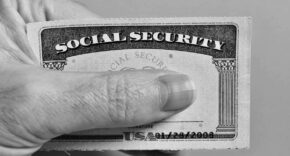Nearly Two Million Borrowers Could Have Paychecks Docked
According to a report from The Wall Street Journal, nearly two million student loan borrowers in the United States are at risk of having their wages garnished this summer. This follows the end of pandemic-related protections and a rise in missed loan payments. The estimate comes from credit reporting agency TransUnion, which says that about one-third of the six million borrowers who are already 90 days or more behind on their loans could officially move into default in July.
That means up to 15 percent of their paychecks could be automatically deducted by the government. Another one million borrowers could default in August, and another two million by September if current trends continue. Borrowers fall into default after being 270 days past due on their student loan payments.
Joshua Turnbull, head of consumer lending at TransUnion, said some people are falling behind because they are overwhelmed financially or are having communication problems with their loan servicers. “Some borrowers might be having communication issues with their student-loan servicers, while others might be too financially stretched to make payments,” Turnbull told The Wall Street Journal.
Collections Resume After Pandemic Pause
The Department of Education officially restarted collections in May, after a pause that began in 2020 during the early days of the COVID-19 pandemic. For the past several years, borrowers were not required to make payments, and their credit scores were protected.
In 2023, the Biden administration introduced a 12-month “on-ramp” period to ease people back into repayment. During this period, missed or late payments would not affect credit scores. But that ended in the fall of 2024, and now collections have returned in full force.
In June, the Department began sending letters to borrowers warning that they could lose their tax refunds or federal benefits if they did not take action to resume payments. Wage garnishment is expected to follow for those who do not respond.
Borrowers who have recently become delinquent are already seeing the effects. According to TransUnion, those who were reported as late on payments after the “on-ramp” period ended have seen an average 60-point drop in their credit scores.
The Department of Education is pushing borrowers to take repayment seriously. It says around 43 million Americans owe a total of more than $1.6 trillion in federal student loans. New York Federal Reserve data released in March suggests that more than nine million of those borrowers could see their credit scores fall this year.
Supreme Court Reopens Debate on Debt Forgiveness
At the same time that collections are restarting, the U.S. Supreme Court has agreed to hear a major case about student loan forgiveness. The case involves the Biden administration’s 2022 update to the “Borrower Defense” rule. This rule, originally created in 1994, allows borrowers to ask for loan forgiveness if their school defrauded them or closed down.
President Biden expanded the rule to make it easier for borrowers to qualify. But the update was challenged in court by the Career Colleges & Schools of Texas (CCST), a trade group for for-profit colleges. In 2023, a judge from the Fifth Circuit Court of Appeals blocked the new version of the rule. Now, the Supreme Court has agreed to weigh in on whether the Department of Education can forgive loans for defrauded students before they go into default.
The Trump administration’s Solicitor General D. John Sauer submitted a motion to resume the case, saying the Department believes “the Higher Education Act permits the assessment of borrower defenses before default, in administrative proceedings, and on a group basis.” The Supreme Court accepted the request and will now schedule oral arguments.
Supporters of the updated rule say it’s needed to help students who were misled by their schools. Alan Collinge, founder of the group Student Loan Justice, said the real issue is the role of for-profit schools in driving up default rates. “The majority of their students wind up in default, years of history have shown,” he told Newsweek. Collinge said the government should do more than defend the rule. “They should be shuttering the large majority of these scam colleges. They should have closed them down years ago, frankly,” he said.
TikTok Trends Offer False Hope for Erasing Debt
While millions of Americans are facing the return of collection efforts, some borrowers are turning to misleading TikTok videos that promise to erase student loan debt using tricks or loopholes, reports the NY Times. One viral video with over 200,000 views claims, “This is how to delete your student loans.”
Some of these videos suggest filing a complaint under the Family Educational Rights and Privacy Act (FERPA) or disputing the debt on a credit report. Others falsely claim that a government agency called the “Department of Government Efficiency” is helping borrowers delete their loans.
One TikTok user, Melinda Johnson, admitted that disputing the loan on her credit report worked in getting it removed from her file, but she also acknowledged that she still owed the money. “I do know that the debt will still be my responsibility,” she said.
Experts are warning that these tricks can backfire. Megan Walter, a policy analyst at the National Association of Student Financial Aid Administrators, said, “While it may get removed temporarily or permanently, you still have an underlying debt obligation to the Department of Education or the lender.”
Experian, one of the major credit bureaus, also responded to the trend. “Submitting a dispute does not negate a consumer’s obligation to repay their student loans,” the company said in a statement.
Borrowers Are Running Out of Options
Student loan forgiveness programs still exist for those who qualify, especially income-driven repayment plans that lower monthly payments based on income and family size. Some plans offer loan forgiveness after 10 to 25 years of regular payments. The Biden-era SAVE plan was one such effort to help reduce payments, but its future is uncertain under the Trump administration.
Education Secretary Linda McMahon, speaking at the Western Governors’ Association meeting in New Mexico, defended the decision to resume collections. She said the payment pause caused confusion for many families. “American taxpayers will no longer be forced to serve as collateral for irresponsible student loan policies,” she said.
McMahon added that the Department had already collected $200 million in payments since restarting the program. She shared a story from a father who was unsure whether to use his child’s educational trust fund. “He said, ‘I wasn’t sure that I wanted to pay out that money, because if it was going to be forgiven, was that short changing them in the long run?’”
With millions at risk of default and few clear solutions ahead, borrowers are facing a challenging summer. The promise of forgiveness remains tied up in court, the viral hacks don’t hold up to scrutiny, and for many, the paycheck deductions could start within weeks.





